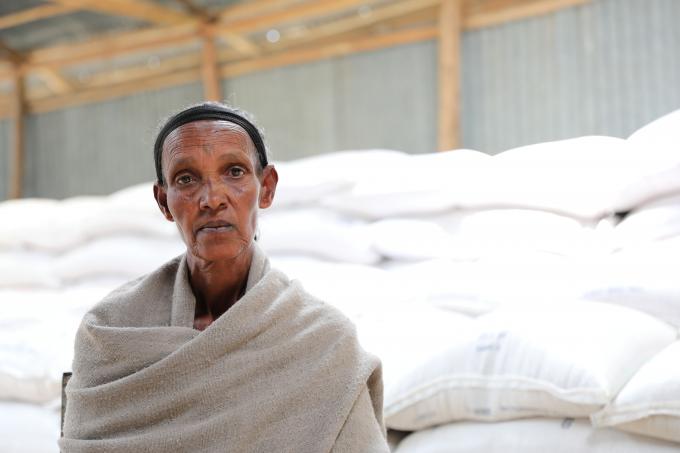Surviving Recurrent Droughts : Zenebu's Story
Bordered in the East by the barren fields of the Afar region, the terrain in Eastern part of the Amhara region in Ethiopia has always been described as a chain of mountains and hills, an area of dry and lowlands. Add that to the area’s close proximity to the Great Rift Valley which borders it in the East and it won’t be hard to imagine dry weather is apparent and rain is scarce. This coupled with other reasons have left the area a fertile ground only for drought.
It is in these harsh conditions Zenebu Yimer, a 47 -year -old single mother of five strives to lead life in Tekulesh, an arid rural area 22 km from a small town named Kobo, despite the harsh circumstances. The area is so hot Zenebu’s village is actually called ‘Berha’, the Amharic word for desert. And it is frequently struck by drought which usually leaves people without food let alone assets to sell and create income in times of need.
In worst case scenarios, the drought exacerbates the living condition of vulnerable groups especially female-headed households like Zenebu, who lack in basic resources and economic means to shoulder the impact. Zenebu has a plot land sizing a third of a hectare another farmer ploughs. Each cropping season, they sow sorghum, Teff and lentil to harvest up to 1.5Qtls of grain when conditions are good. But when unfortunately, the crops fail Zenebu will be left with no choice other than going to her older sister’s place in the town nearby. There, Zenebu and her children will find solace and a safe haven for a couple of months.
Zenebu separated from her husband over ten years ago. “He left me and married a woman from a well to do family”, says Zenebu, referring to her husband who has now taken custody of their two children. Her other children are a 4th year university student who is in his final year and a 12- year- old daughter.

Zenebu sits infront of stored food in a food distribution point
The subsistence farming in Berha highly depends on many variables like timely rain, unpredictable weather and pests. The amount of farm produce will accordingly switch between surplus and failure. In the current harvesting season, the latter was true. Her harvest was infested by a certain type of pest. So this year, Zenebu was able to get merely 50 kg millets and the output from lentils remains less than 15 kg.
The recurrent droughts in Ethiopia that resulted from consecutive droughts have forced 8.5 million people into food insecurity and 3.9 million children into acute malnutrition. Continued droughts aggravated by extreme weather conditions have severely affected the lives and livelihoods of the rural communities, leaving millions of people in need of assistance. This is why Zenebu has been receiving emergency food assistance from USAID’s Joint Emergency Operation project throughout this year. The food distribution in late June near her village marked the third time she got food assistance. “Each time, I get 45 kg of wheat, 4.5 liters of vegetable oil and 4.5 kg of yellow split peas. I sell a quarter of the wheat and send some money to my son who is in university and we use the rest for household consumption,” says Zenebu who seems like some weight has been removed off her shoulder.
 Ethiopia
Ethiopia